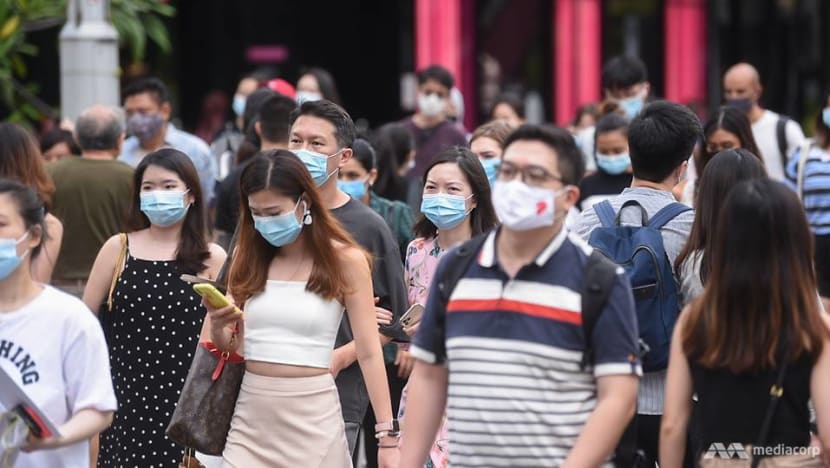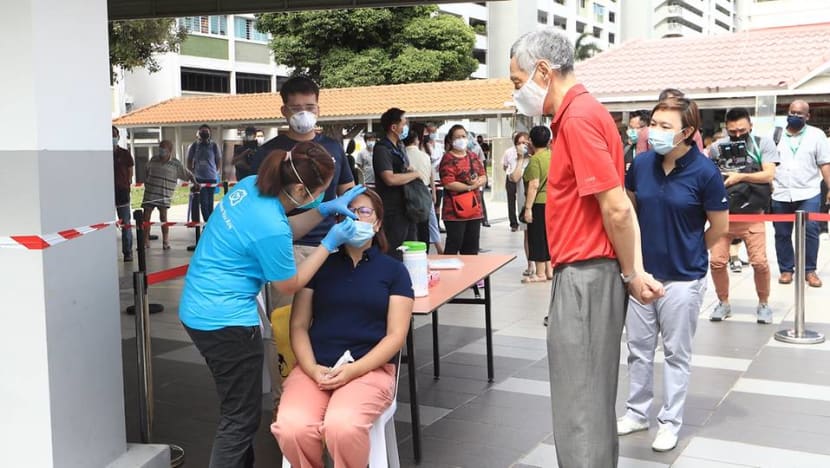commentary Commentary
Commentary: Let’s switch from wanting to be COVID-free to becoming COVID-vigilant
Singapore went 15 days without a single community infection and this may have raised hopes of a return to normal. But we should shift our understanding of what success with the virus means, says NTU’s Josip Car.

Pedestrians wearing protective face masks along Orchard Road in Singapore on Sep 9, 2020. (File photo: Gaya Chandramohan)
SINGAPORE: In a recent interview with the British Medical Journal, Dr Anthony Fauci, director of the US National Institute of Allergy and Infectious Diseases, reflected on the state of COVID-19 in the US and around the world.
He noted “One of the things we need to be careful of is that we don’t let the perfect be the enemy of the good.”
This has since stuck with me. As a researcher, I believe that science wrestles with this twin set of priorities: To be rigorous in evidence, and to be expedient in delivery.
Sometimes, the moment just cannot wait – for example, in the early stages of the pandemic, I worked with esteemed colleagues from Oxford, Stanford and the National University of Singapore (NUS) to write best practice guides for remote assessment and for video consultations in primary and specialist care to help doctors around the world conduct COVID-19 related and other consultations remotely, using telemedicine.
READ: New community COVID-19 case after 15 days shows virus still 'lurking about' in the community: Experts
It helped in equipping our colleagues on the frontlines with a set of practices they could rely on to keep their consultations safe for them and their patients.
Other times, it pays to play it safe as science does her work, instead of letting our desire to return to a sense of normalcy get the better of us.
We see this in the urgent desire of countries to reopen trade routes, travel bubbles and certify vaccines, juggling calculated risks that, at present, are not paying off for them.
TENSIONS BETWEEN ECONOMIC IMPACT AND INFECTION SPREAD
Looking in from the outside, such moves seem to display tension between dire societal and economic impact, and epidemiological measures to prevent infection spread.
The desire beneath them, however, is all too recognisable within ourselves.
Perhaps, we want desperately for COVID-19 to disappear as SARS did in 2003, never to resurface in public memory since. We see the line of “COVID-free” drawn in the proverbial sand, and once we cross it, perhaps we shall be rid of the long shadow the virus has cast over our lives.

At this juncture, Dr Fauci’s words beckon once again, like a gnawing reminder. The class might be the same, but COVID-19 is no SARS.
It has brought entire economies to a screeching halt. It has changed the way we see our society, our sociability, our politics and our policies. It spreads differently as a disease: COVID-19 is the invisible lurker to SARS’ attention-seeker, with asymptomatic cases much more prevalent and similarly infectious.
Not everybody recovers equally well from it; the long-term effects of COVID-19 are still being studied. According to some of the latest studies, vaccines are not expected to grant life-long immunity either.
READ: No reports of 'long COVID' cases in Singapore so far: MOH
This will not be a perfect line in the sand. Reaching a point of being 28 days or more without community cases will not return things to the humdrum of 2019 – we truly have a new world ahead of us.
THE FUTURE IS UNLIKELY TO BE COVID-FREE
I would argue that the future is not one that is COVID-free, not at least in how we currently understand the virus SARS-CoV-2.
We have witnessed countries like New Zealand, who declared being COVID-free status after 102 days of no local transmission, only to discover the re-emergence of community cases a short way down the victory road.
After going through a relatively short period of having no community cases and worker dormitory cases, Singapore might have felt like it could see glimpses of the finish line, only to be dashed.
READ: Commentary: Moving to Singapore in the middle of a pandemic has changed the meaning of home
While there is not enough data for us to say that this will be the prevailing pattern, we can be more certain in concluding that it would be too premature to declare that the virus is gone just because we have gone for some time without it (and we have not yet taken into consideration the ongoing imported cases during that same period.)

It might sound defeatist to hear it, but we adopt this attitude for other infectious diseases in Singapore – hand, foot and mouth disease, tuberculosis, even cholera.
These infectious diseases, while small in influence, are profound enough for us to recognise that continuous measures are required to keep them at bay.
Achieving a COVID-free status is evidently a temporary passport stamp, a fragile state of existence easily erased with the next local transmission discovered, or hidden reservoir revealed.
We will likely need similar continuing mechanisms to monitor the situation even when the cases subside.
A more realistic future is one where there is well-maintained COVID vigilance.
READ: Commentary: Singapore’s almost in our new normal. Don’t be the dud who jeopardises that
Certainly, in the near term, there is more work to be done, more risk areas to address.
Firstly, to diminish the possibility of community cases re-emerging, we need to continue with aggressive testing efforts and widen the scope of screening.
To mitigate the different sensitivities and inaccuracies of tests, random screening needs to be conducted regularly, at scale, with testing expanded to cover milder symptoms and more segments of the population at higher risk of catching or transmitting the virus.
This would help counter the threat of infections going undetected within the community, which may occur due to asymptomatic and mild-symptomatic cases, as well as symptoms being written off as but a common cold or viral infection.
While there may be adequate personal protective equipment to go round, healthcare and other frontline workers can be better protected by more regular testing as observational studies have shown that they do face a higher risk of COVID-19 exposure at the workplace.
A NATION THAT UNDERSTANDS THE DISEASE
Public health researchers have also urged that this should also be coupled with encouraging stringent self-monitoring and reporting to occupational health officers, so that even mild symptoms (which can be indicative of SARS-CoV-2) can be assessed early on.
The two go hand-in-hand to give authorities a clear picture of where the nation stands with the virus: Heightened population testing needs to be reinforced with a culture that understands the importance of self-monitoring and reporting.

It is therefore more important than ever that we communicate and live out responsible individual behaviours like mask-wearing and symptom-checking, so that we don’t regress into another outbreak that overburdens our health systems.
And with plans to gradually ease border restrictions and re-open the economy for international trade, not only can we potentially expect more infections that may fall through detection, there is also the risk of new clusters forming aboard international modes of transportations such as airplanes and ships, where travellers remain in an enclosed, close-ventilated space for extended times.
READ: Commentary: A COVID-19 vaccine in Singapore? Here's what has to happen first
More rigorous testing could mitigate this, with increased frequency that takes into consideration different points of the traveller’s stay as there are different stages of disease when test could be negative, but the person passing the infection later on.
While I believe our future policies will veer towards a trajectory of COVID vigilance, I do not believe this is a sign of pessimism.
As Singapore has already shown with its low community and migrant worker cases, our vigilance is a bellwether for how much we allow the virus to be successful over us.
Let us not let our desire for the perfect cloud our ability to do good now.
Associate Professor Josip Car is the Director of the Centre for Population Health Sciences at NTU’s Lee Kong Chian School of Medicine.














